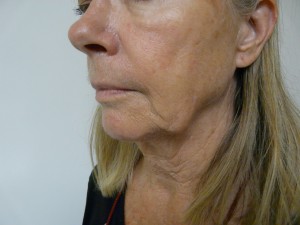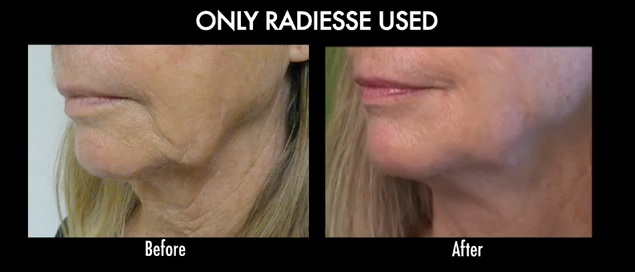Radiesse is a dermal filler used for correcting wrinkles, saggy skin and volume loss. It is a safe, less invasive alternative to surgery and has earned its nickname as a “liquid facelift.”
What is Radiesse Made Of?
Radiesse injections are made of calcium hydroxlyapatite, Ca10(PO4)6(OH)2 particles suspended in a water based gel medium.
How Does Radiesse Work?
Calcium hydroxlyapatite is a natural compound that exists in bones. And it is a building block of collagen fibers. So injections of Radiesse work to facilitate the chemical process of synthesizing collagen by supplying this key component.
Once injected, the calcium hydroxylapatite works to create a frame like matrix that provides a structure for new collagen to grow on. This new period of tissue growth lasts about 2-3 months.
Because it can provide this type of firm support, Radiesse is used in some instances on the bridge of the nose as a non-surgical alternative to rhinoplasty.
How Long Do Radiesse Injections Last?
Radiesse injections last about 12-18 months.
Where is Radiesse Used?
Radiesse is commonly used to treat:
- Marionette lines
- Nasolabial folds
- Frown lines
- Jowls
Although there are other fillers that can correct marionette lines, nasolabial folds and frown lines, Radiesse is more of a specialized non-surgical solution for jowls. Because it offers structural support, it is able to correct sagging skin in the jaw area, creating a firmer contour.
Before and After Case Study: Using Radiesse to Correct Jowls

Jowl prior to Radiesse*
This patient requested a comprehensive treatment to address facial lines in various parts of her face. However her jowls were also a significant area of concern. Dr. Umar used Radiesse to minimize the sagging skin and restore the contour of her jawline. This case study illustrates the application of Radiesse as a structural corrective agent.

